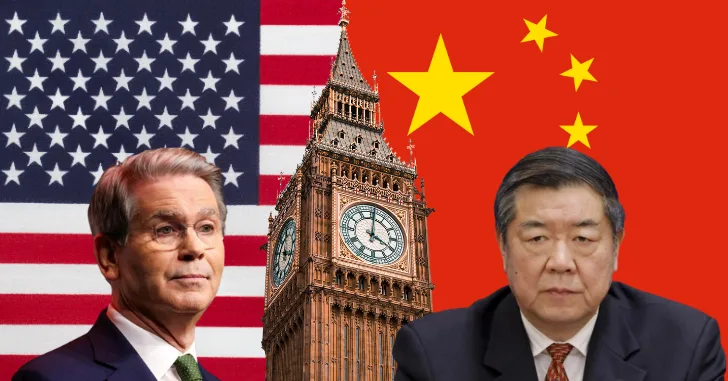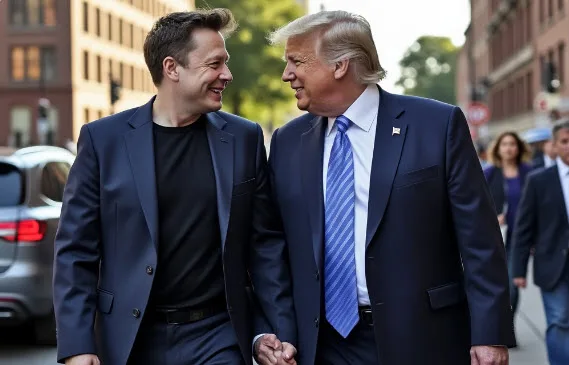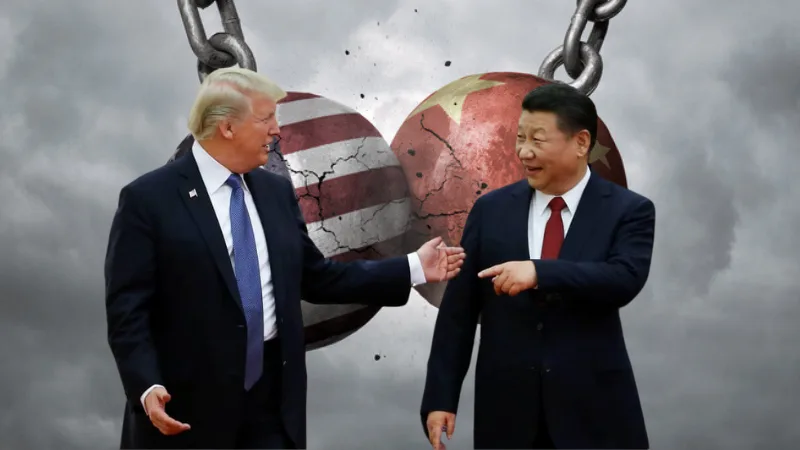LONDON, June 9, 2025 — In a high-stakes diplomatic move, top trade negotiators from the United States and China are meeting in London today to revive momentum on a fragile truce agreed last month in Geneva. With global markets closely watching, these talks could significantly reshape the trajectory of tariffs, trade flows, and investor confidence for the remainder of 2025.
This closed-door meeting brings together U.S. Treasury Secretary Scott Bessent, Commerce Secretary Howard Lutnick, and U.S. Trade Representative Jamieson Greer. On the Chinese side, Vice Premier He Lifeng is leading the delegation. The session is being held at an undisclosed location in central London, away from press access—underscoring the seriousness and sensitivity of the negotiations.
A Quick Recap: Why These Talks Matter Now
Just weeks ago, on May 12, a tentative truce between the two economic giants was reached during emergency discussions in Geneva. Both countries agreed to temporarily freeze or roll back a wave of aggressive tariffs, some as high as 100% or more, that were set to escalate amid growing tensions.
The Geneva ceasefire was brokered after President Donald Trump and Chinese President Xi Jinping spoke directly via a 90-minute call. Sources close to both administrations described the call as “productive,” which has led to the current London talks aimed at fleshing out actionable steps.
With the global economy facing persistent inflation pressures, slowing trade flows, and political instability across Europe and Asia, the world’s two largest economies reconciling—even partially—could influence everything from commodity prices to currency stability.
Top Priorities: What’s on the Table in London
This meeting is not expected to deliver a sweeping trade agreement—but rather to solidify tactical gains, clear short-term roadblocks, and mitigate the most pressing risks. Here’s what’s reportedly on the agenda:
1. Export Controls on Critical Materials
The United States wants Beijing to ease export restrictions on rare-earth elements, high-performance magnets, and specialty metals. These are essential for electric vehicle (EV) batteries, wind turbines, semiconductors, and advanced defense systems.
While China controls the majority of the global supply for these materials, it has tightened its approvals in recent months, citing national security concerns. Washington claims this violates prior trade commitments. A U.S. official familiar with the talks said, “There’s no green transition or AI revolution without these inputs. We need reliability, not politics.”
In a possible goodwill gesture, Chinese regulators last week approved a handful of export licenses for U.S.-based manufacturers—perhaps signaling a willingness to compromise if sanctions don’t escalate further.
2. Semiconductors and Strategic Industries
Another primary concern is China’s push to dominate high-end semiconductor manufacturing. The U.S. is demanding greater transparency into China’s state subsidies, particularly those tied to strategic technology sectors such as AI, quantum computing, and defense-related manufacturing.
The Biden-era CHIPS Act has evolved under the Trump administration into a more aggressive policy toolkit, with provisions allowing the U.S. to restrict equipment sales and investment flows tied to entities deemed “at risk” of enabling military-civil fusion.
China, meanwhile, has protested what it sees as “economic containment.” Vice Premier He Lifeng is expected to push back hard on this point, arguing that Chinese tech firms should not be punished merely for competing at scale.
3. Rebalancing Trade Flows
Recent trade data show that U.S.–China trade has dropped by more than 30% year-over-year, with many multinationals relocating their supply chains to Southeast Asia or Mexico. This realignment, while aligned with U.S. reshoring efforts, is significantly reducing China’s export surplus and weakening its economic recovery.
The Trump administration may use this leverage to extract new commitments from China to purchase more U.S. goods—especially agricultural exports, liquefied natural gas (LNG), and industrial machinery—to help rebalance the trade relationship. In 2024, China failed to meet targets set under earlier phases of the trade agreement.
What Investors Need to Know
📈 Market Reactions So Far
Markets responded positively to news of the talks. Hong Kong’s Hang Seng Index rose 1.4% on Monday, while U.S. equity futures showed early strength, reflecting cautious optimism. The S&P 500, which had been rattled earlier this year by tariff-driven volatility, has since recovered nearly all of its 18% loss in the spring.
The U.S. dollar remains slightly weaker against the yuan compared to pre-truce levels, reflecting lower demand for safe-haven assets amid easing trade tension.
🔍 Key Sectors to Watch
- Technology: Firms with Chinese exposure, such as Apple, Nvidia, and Qualcomm, could rally further if export restrictions are eased.
- Commodities: Copper, lithium, and rare-earth futures may respond swiftly to any new export license announcements.
- Manufacturing: U.S. machinery and auto suppliers may benefit if China pledges to buy more goods.
- Agriculture: Midwest farmers are closely watching for signs of renewed Chinese orders for soybeans and corn.
Don’t Expect a Grand Bargain—Yet
Even if some progress is made, don’t expect a major deal out of London. The structural differences between the U.S. and Chinese economic models remain stark.
President Trump has repeatedly emphasized that he wants results—not more “empty promises.” He stated on Truth Social last week, “We’re done playing nice. Either they open their markets and stop cheating—or we’ll raise tariffs even higher.”
This pressure comes ahead of the July 9 tariff deadline, when the U.S. is set to make a final decision on whether to impose 100% duties on luxury EU goods. The White House likely wants to establish stability with China before shifting its focus to Europe.
🛑 Sticking Points
- China’s “dual circulation” policy—which prioritizes domestic consumption and limits foreign influence—is seen by U.S. officials as incompatible with fair trade.
- Intellectual property theft and forced tech transfers remain unresolved.
- Human rights and Taiwan—though not officially on the agenda—loom in the background.
Political Context: Why London, Why Now?
This meeting is symbolic in both timing and geography. London serves as a neutral backdrop while Europe watches nervously from the sidelines, already embroiled in its own trade tensions with the United States.
Politically, Trump is under pressure to show strength heading into the final months before November’s presidential election. A breakdown in talks would likely be spun as China’s intransigence—but a breakthrough, even a minor one, would bolster his image as a dealmaker.
China, on the other hand, is grappling with weak GDP growth, youth unemployment above 18%, and shrinking foreign investment. Stabilizing its U.S. relationship could provide breathing room.
Truce or Trap?
The U.S.–China trade talks in London represent a critical inflection point in global economic diplomacy. If the two sides can hammer out a framework for mutual concessions—focused on export licenses, market access, and purchasing commitments—investors could see a reduction in volatility and a boost in sector-specific gains.
But if the talks break down, expect a resurgence of tariffs, market jitters, and increased pressure on supply chains and inflation metrics worldwide.
For now, the tone appears cautiously constructive. But the next 48 hours will tell whether that tone turns into something tangible—or whether another chapter of the trade war is about to begin.





